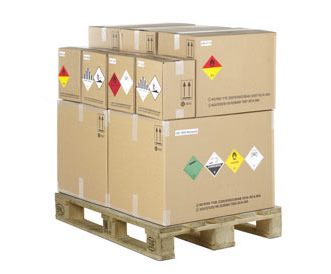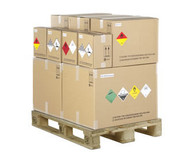Do I Need Training?
18th Aug 2014
Training for What? Hazardous Materials? Dangerous Goods?
You show up for work one day and your warehouse manager is waiting at your desk. Says he received a shipment with a bunch of different labels on the boxes. They look like different colored diamonds with different symbols on them. Come to find out, they represent Dangerous Goods or Hazardous Materials, as they’re called here in the United States. Say what? Are they dangerous? Am I allowed to have them in my warehouse? What are the requirements?

Fortunately, Dangerous Goods are managed at a world-wide level and there are basic standards by which, we are obliged to comply. Dangerous Goods are separated into nine different Hazard Classes – This standard is world-wide. Class 1 is Explosives, Class 2 is Gasses, Class 3 is Flammable Liquids, and so on. A simple google search will quickly identify these nine Hazard Classes as well as other domestic and international standards. Of all the other standards, Training is the most popular, critical, and rewarding.
Who needs training? There are three primary regulations that govern the transport of Dangerous Goods. They are, 49CFR, (Our American Law), The IMDG Code for transport by Ocean, and The ICAO Technical Instructions for transportation by Air. Each of these regulations contain a Training Requirement. Again, fortunately, they are standardized throughout the world. They all say, a Hazmat Employee (49CFR, Section 171.8) must receive training and that training shall include;
- A)General Awareness Training
- B)Function Specific or Job Specific Training
- C)Safety Training and
- D)Security Awareness Training
So, if you or any of your employees have anything to do with the transportation of Dangerous Goods, those persons must receive training which shall include all four subjects shown above.
Now let’s get into it. “My employees only receive the freight, they only need General Awareness Training.” Again, any person who is responsible for the safety of the Hazardous Materials while in transportation must receive training as outlined above. “My secretary sits out front and only reviews the paperwork for inbound and outbound freight.” She too is a Hazmat Employee. Her responsibilities directly affect the safety of that shipment.
“Okay, what about those employees who work in the building but have nothing to do with the trucks, warehouse, or paperwork?” The most dangerous situations occur and involve those who don’t know what they don’t know. How will your employees know they are not allowed to handle or otherwise ship Dangerous Goods if they don’t know what they are? This is where General Awareness or Recognition Training comes into play. DGI provides a short two hour webinar which explains the nine different Hazard Classes and the rules, regulations, and procedures required to transport Dangerous Goods. “My company doesn’t accept Hazardous Materials, we don’t need training.” A classic example of the need for Recognition Training. How will they know what not to accept, if we don’t show them?
If they’re hands-on (anything), paperwork, boxes, labels, marking, materials, loading, storing, they must be fully trained. The moral here is don’t skimp, don’t cheat. Don’t think you can get away with General Awareness Training for the entire crew. Everybody has different responsibilities and their training should be commensurate with their responsibilities. I suggest comparing their job responsibilities with DGI Training Center's curriculum.


